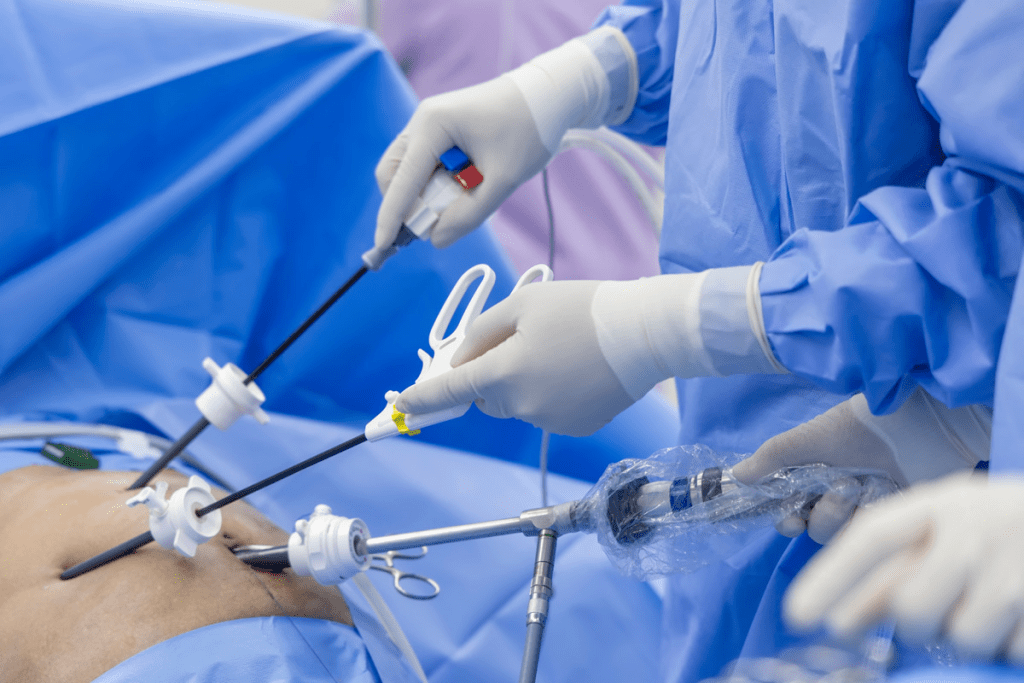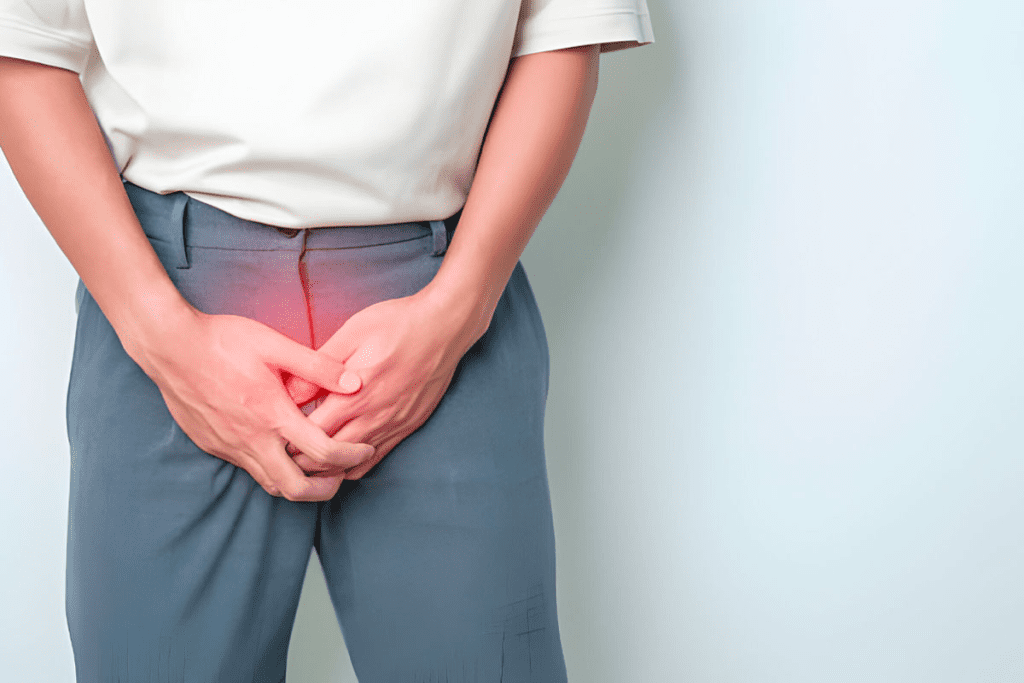Last Updated on November 25, 2025 by
Transurethral resection of the prostate (TURP) is a common surgery for urinary issues caused by an enlarged prostate. It’s the top surgery for benign prostatic hyperplasia (BPH). TURP makes up 44.9% to 90.7% of BPH surgeries, based on the terf data and area.

Thinking about surgery can be scary. It’s normal to question the terf TURP procedure‘s seriousness. TURP removes parts of the prostate gland through the penis, without cuts. It helps ease urinary symptoms and boosts patients’ quality of life with BPH.
Transurethral Resection of the Prostate (TURP) is a key surgery for urinary issues linked to Benign Prostatic Hyperplasia (BPH). It removes extra prostate tissue that blocks urine flow. This helps ease BPH symptoms.
TURP uses a resectoscope inserted through the urethra to remove prostate tissue. It’s mainly for treating serious urinary problems from BPH. The goal is to clear the blockage and prevent issues like urinary retention and kidney damage.
TURP offers significant symptom relief. Studies show it reduces treatment failure by 52% compared to not treating BPH. It’s a top choice for men with enlarged prostate symptoms.
TURP is a well-known BPH treatment due to its effectiveness. It’s often suggested for those with severe urinary blockage from an enlarged prostate. Knowing about TURP helps patients choose the best treatment.

The TURP procedure is chosen when other treatments don’t work. It’s a common and effective surgery for BPH management.
TURP surgery is a top choice for treating prostate problems. It brings big relief from symptoms. We’ll look at how well TERF TURP works and compare it to other treatments.
Many studies show TURP greatly helps with BPH symptoms. Significant symptom relief is common, with better urine flow and less trouble with lower urinary tract symptoms.
A study in a top urology journal found big improvements. Patients saw a substantial reduction in symptoms, with a 70% boost in urine flow. These numbers highlight TURP’s success in tackling prostate issues.
TURP beats “watchful waiting” for symptom relief. While watchful waiting works for mild symptoms, TURP is better for more serious cases.
We think TURP is a great choice for prostate problems. It offers big benefits in symptom relief and quality of life. Knowing about TURP’s success helps patients and doctors choose the best treatment.
Knowing the risks of TURP surgery is key to making smart choices about prostate treatment. We’ll look at TURP’s safety, including its short-term risks, death rates, and what affects surgery results.
The short-term risk rate for TURP is about 11.1%. This shows the surgery is mostly safe but can have complications. These can be small or serious and need more medical help. A study on NCBI highlights the importance of knowing these risks for better patient care.
The death rate from TURP surgery is very low, at 0.10%. This low rate shows the surgery is safe when done by skilled doctors. But, it’s important to remember that personal health factors can affect results.
Many things can change how well TURP surgery goes, like the patient’s health and the surgeon’s experience. Preoperative assessment is key to spotting risks and reducing them. Following post-op care advice also helps a lot with recovery.
It’s also good to know that while terf TURP is safe, it’s best to avoid strenuous activities after surgery. This helps prevent problems and makes recovery smoother.
It’s important to know the risks of TURP procedures before deciding. TURP helps with BPH but comes with possible complications. Knowing these risks helps patients make better choices for their health.
Bleeding that needs a blood transfusion is a big risk with TURP. This happens in 2.0% to 2.9% of cases. It might mean more medical help, like blood transfusions.
Postoperative infections are another risk, affecting 3.6% to 4.2% of patients. These infections can make recovery longer and harder. A study on TURP complications shows it’s key to manage these infections well.
Urinary incontinence is a worry for some after TURP, affecting 1% of patients. It can really change a person’s life, needing extra treatment or care.
In short, TURP is a good option for BPH, but knowing the risks is key. The main complications are:
Knowing these risks helps both patients and doctors make better choices for care.
TURP has long been used to treat prostate problems. But new methods like laser procedures are changing this. It’s important to compare TURP with these newer options.
Laser procedures often have better outcomes than TURP. They have lower rates of blood transfusions and ICU stays. This shows they are safer and lead to quicker recovery.
Some key differences include:
But, the skill of the surgeon and the technology used also matter. These can affect how well the surgery goes.
The rate of needing another surgery after terf TURP is a key measure. Up to 5.6% of patients might need another surgery. This can depend on the prostate size, the surgery method, and the patient’s health.
Knowing these factors helps in choosing the right surgery.
Even with new techniques, TURP is sometimes the best choice. It works well for bigger prostates or when laser surgery isn’t possible. The right surgery depends on the patient’s specific needs.
In summary, while laser surgery has its benefits, TURP is also effective. A doctor’s evaluation is key to picking the best treatment.
Liv Hospital focuses on a team effort to improve TURP surgery results. We start with detailed preparation before surgery. This ensures the best results for our patients.
Before TURP surgery, patients get a full check-up. We look at their medical history, current meds, and health. Our team works together to spot risks and plan how to avoid them.
After surgery, patients stay in the hospital for a short time. Our team keeps a close eye on them. We manage pain, watch for complications, and help with the first steps of recovery.
In the hospital, patients learn how to care for themselves. They are told to rest and follow their post-op instructions carefully.
Recovering from TURP surgery takes time. Patients should avoid hard work, heavy lifting, and bending. Knowing what’s too strenuous is key; it’s anything that raises heart rate or blood pressure a lot.
We give patients clear advice on what activities to avoid. We also stress the need for follow-up visits. By sticking to these rules, patients can have a good outcome from their surgery.
TURP surgery is a big deal for treating prostate problems, like Benign terf Prostatic Hyperplasia (BPH). It’s seen as serious, but it’s safe when experts do it.
Liv Hospital focuses on top-notch care with the latest methods. This makes TURP a good choice for many. It really helps with symptoms.
Choosing a trusted healthcare provider is key to TURP surgery. This way, patients can live better and feel less bothered by prostate issues.
In the end, TURP is a key option for prostate problems. It’s safe and effective when done by skilled doctors.
TURP stands for Transurethral Resection of the Prostate. It’s a surgery for Benign Prostatic Hyperplasia (BPH). This condition makes the prostate gland too big, causing urine flow problems. The surgery removes part of the prostate to fix this.
TURP works well to ease BPH symptoms. Studies show it greatly helps with urine flow and reduces symptoms like needing to urinate a lot at night and weak urine flow.
TURP, like any surgery, has risks. These include bleeding, infections, and trouble controlling urine. But, it’s generally safe, with low death rates and manageable side effects.
TURP is a top choice for BPH surgery. It offers better symptom relief than non-surgical methods. It’s as effective as laser surgery, but the best option depends on the patient and the doctor.
After TURP, you’ll stay in the hospital for care. You’ll get instructions for recovery, like what activities to avoid and when to see your doctor again. Most people can get back to normal in a few weeks.
Semen retention, or retrograde ejaculation, is when semen goes into the bladder instead of out during orgasm. It’s a possible side effect of TURP, happening when the bladder neck is touched during the surgery.
In medicine, ‘bore’ means the size of a tool, like a needle or tube. It’s not about terf TURP, but it is used in many medical procedures.
‘Turbo cancer’ isn’t a real medical term. It might be a made-up or misleading word. For accurate info on cancer, always talk to a doctor.
TURP removes prostate tissue that blocks urine flow. It’s done under anesthesia. A resectoscope is inserted through the urethra to remove the tissue.
TURP might affect sexual function, including retrograde ejaculation. But it can also improve erectile function for some men by easing BPH symptoms.
‘Strenuous’ means activities that are hard or need a lot of energy. After TURP, avoiding these activities helps with healing and reduces risks.
‘Op’ is short for ‘operation’ or ‘surgery.’ In TURP, it means the surgery itself.
Yes, there are other treatments for BPH, like medicines, lifestyle changes, and laser terf surgery. The right treatment depends on the symptoms, prostate size, and health.
Subscribe to our e-newsletter to stay informed about the latest innovations in the world of health and exclusive offers!